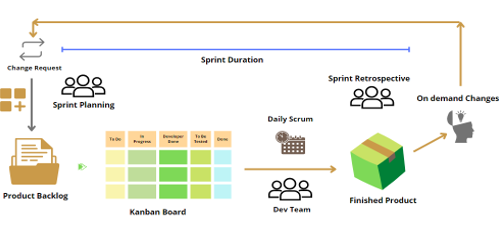Optimizing Project Management Efficiency through ScrumBan: A Comprehensive Analysis of Best Practices and Use Cases
Abstract
Project management methodologies continue to evolve in response to the changing needs of organizations and the quest for improved project delivery. Scrum and Kanban stand out as two popular agile frameworks, each offering distinct advantages for navigating project complexities. Scrum provides structure through time-boxed sprints and defined roles, while Kanban emphasizes flexibility through continuous delivery and a focus on limiting work in progress. Recognizing the strengths of both, ScrumBan was conceived as a hybrid approach, aiming to optimize workflow, enhance transparency, and promote collaborative team efforts. This framework borrows Scrum's structured elements like sprints and daily standups, while incorporating Kanban's visual workflow and work-in-progress limits. The resulting flexibility allows ScrumBan to cater to both projects with well-defined scopes and rapid delivery needs, as well as those with more fluid and unpredictable contexts. Moreover, ScrumBan introduces a release planning board that facilitates coordinated releases and aligns development efforts with overarching business goals. This paper delves into the origins, framework, best practices, and use cases of ScrumBan, drawing from a qualitative study with project managers across diverse industries. The research addresses how ScrumBan can maximize project management efficiency and team collaboration, while also identifying potential implementation challenges and practical recommendations for overcoming them. This theoretical and practical contribution aims to serve as a comprehensive guide for project managers considering ScrumBan, equipping them with current knowledge and empirical insights for its successful implementation.
